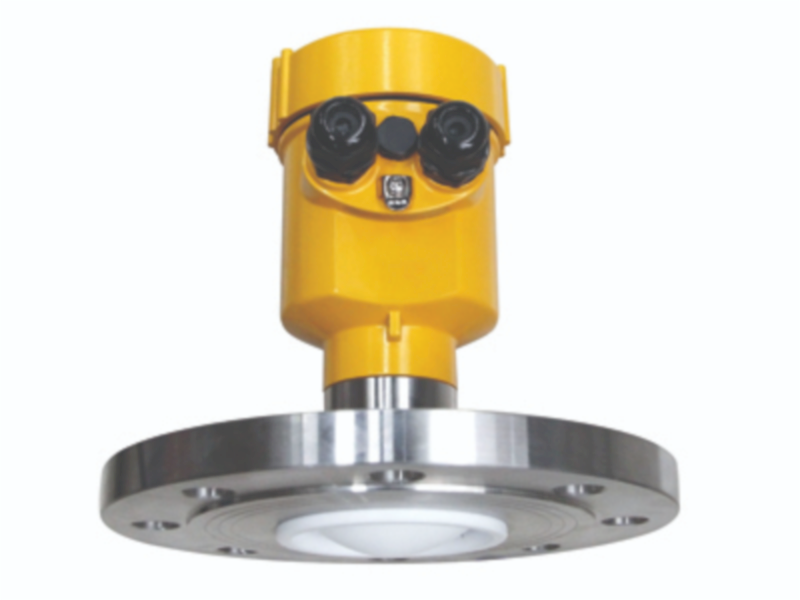BETTER TOUCH BETTER BUSINESS
Contact Sales at KAIDI.
A customized ultrasonic level transmitter is a digital level meter. In the measurement, pulsed ultrasonic waves are emitted by the sensor. The sound waves are received by the same sensor after being reflected by the surface of the object and converted into electrical signals. The distance between the sensor and the object to be measured is calculated from the time between the emission and reception of the sound wave. Due to the non-contact measurement, the measured medium is almost unlimited. It can be widely used to measure the height of various liquid and solid materials.
Radar level transmitter
Radar level transmitter adopts the circuit design of a high-frequency microstrip line structure. Based on the design principle of the high-frequency waveguide, the microwave pulse is emitted from the end of the antenna through the PTFE emitter. When the transmitted pulse hits the surface of the measured medium, part of the energy is reflected back and received by the same antenna. Through the principle of time extension technology, the time interval between the transmitted pulse and the received pulse can be calculated. Then calculate the distance from the antenna to the surface of the measured medium.
Radar level transmitter emits electromagnetic waves. The wave speed has nothing to do with ambient temperature, smoke, pressure, etc. It’s the same even in a vacuum. The propagation speed is always the speed of light.
Industrial ultrasonic level transmitter emits ultrasonic waves, which are mechanical waves. Like sound waves, its propagation speed is closely related to the state of the propagation medium. Ultrasonic level gauges are used to measure the liquid level of atmospheric vessels. The probe contains a temperature measuring element that can compensate the temperature of the wave velocity. Because of the material. The temperature range used is relatively not very wide.

The different working principles result in a big difference between the applications of Radar level gauge and Ultrasonic level transmitters. It is specifically manifested in the following aspects:
The measurement range of Ultrasonic level transmitter is not as large as Radar level transmitter. Radar emits electromagnetic waves, which can be measured without the aid of a propagation medium. Ultrasonic waves are sound waves and mechanical waves, which need to be propagated by means of a propagation medium. Therefore, the ultrasonic level gauge has many limitations in the application process:
(1) Ultrasonic level transmitter cannot be used in working conditions such as vacuum, high steam content or foam on the liquid surface.
(2) Ultrasonic level transmitter has temperature and pressure limitations. The temperature at the probe of the Ultrasonic level transmitter generally cannot exceed 80 degrees, and the speed of the sound wave is greatly affected by temperature. Ultrasonic level transmitter is greatly affected by pressure, generally within 0.3MPa. Because sound waves are generated by vibration, the sound-producing parts will be affected when the pressure is too high. Extended Reading: GWR Level Sensor for High Temperature & High Pressure
(3) Ultrasonic level transmitters cannot measure well when there is a lot of fog or dust in the measurement environment.
Magnetrol radar level transmitters uses electromagnetic waves. It is greatly affected by the dielectric constant of the measured substance. The ultrasonic wave used in the Ultrasonic level transmitter is a mechanical wave. Mainly affected by the density of the measured medium. Therefore, when the dielectric constant of the measured substance is very low, Ultrasonic level transmitter should be used for measurement instead of Radar level transmitter.
In contrast, because the radar is an electromagnetic wave, it is not affected by vacuum. The applicable range of medium-temperature and pressure is also very wide. With the advent of high-frequency radar. Its application range is even wider. Under the same conditions, the Ultrasonic level transmitter is more limited.
The pressure occasions of the two applications are different. Because of the different transmission methods of radar and ultrasonic components. For example, ultrasonic waves are emitted by the vibration of piezoelectric materials. So Ultrasonic level transmitter cannot be used in high pressure or negative pressure occasions. Generally only used in atmospheric pressure vessels. The Radar level transmitter can be used in high-pressure process tanks.
We are here to help you! If you close the chatbox, you will automatically receive a response from us via email. Please be sure to leave your contact details so that we can better assist